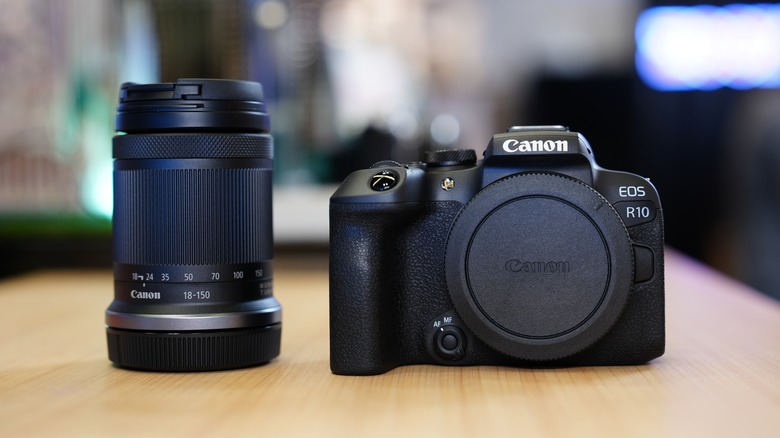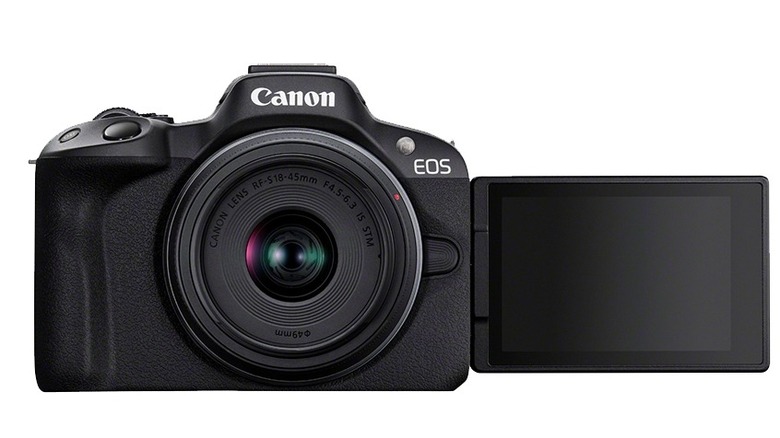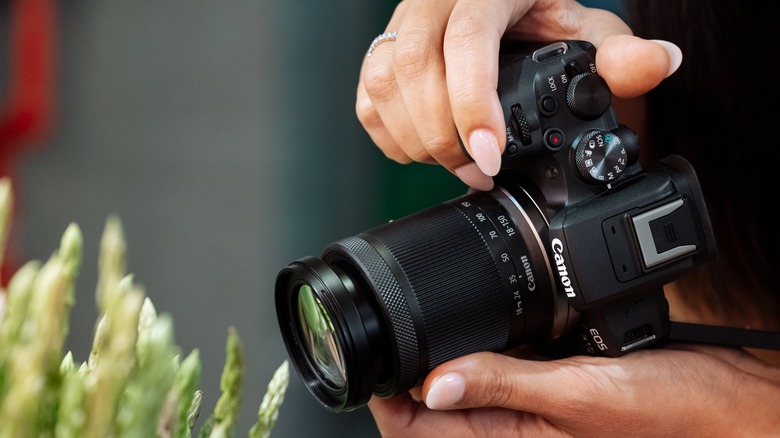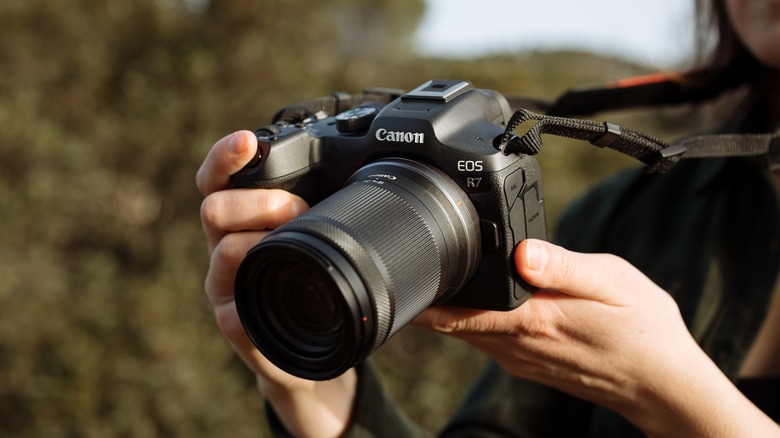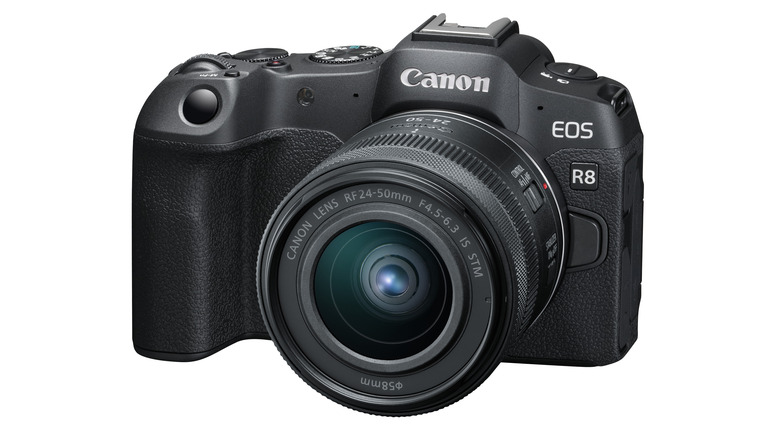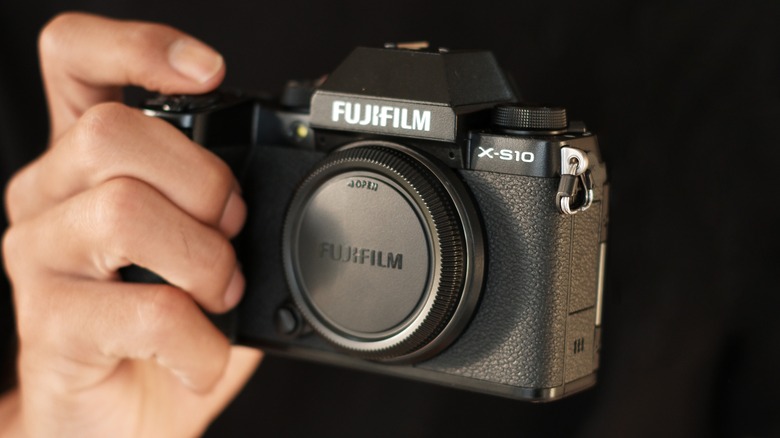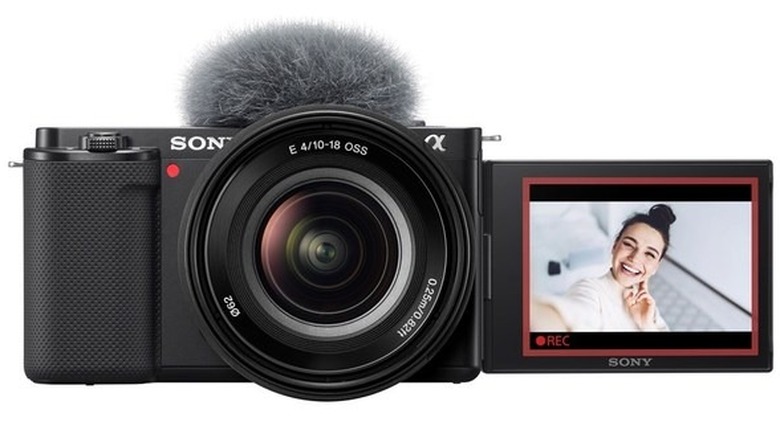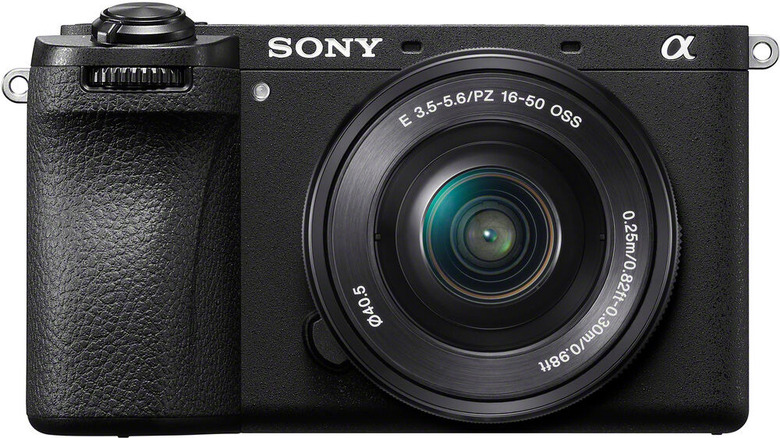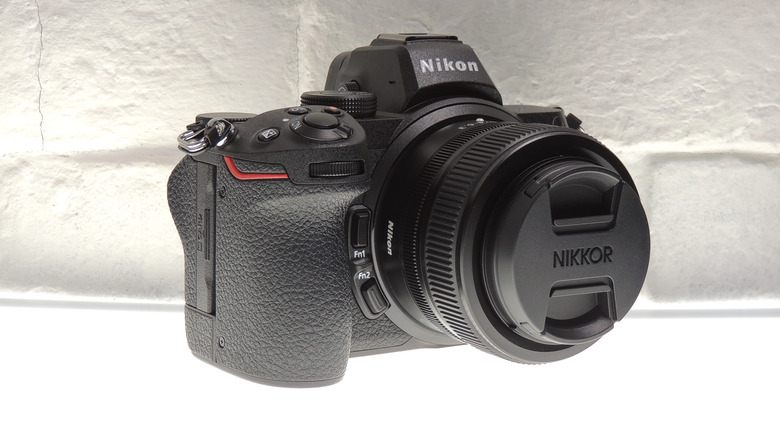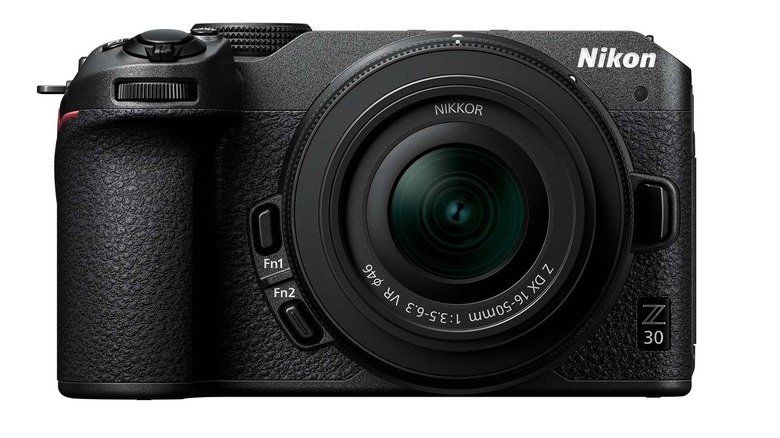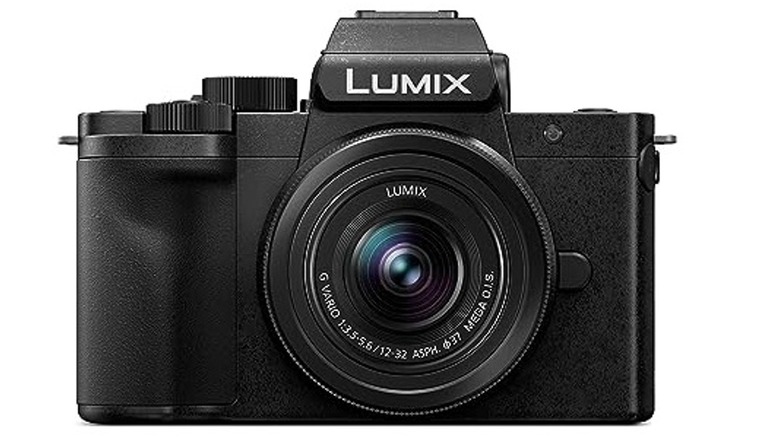10 Of The Best Cameras For Beginners
We may receive a commission on purchases made from links.
Ready to step up from your cell phone? This is a great time to upgrade your imaging game and graduate to the big leagues of interchangeable lens cameras. As convenient as it is to snap photos with your mobile, a dedicated camera can provide tremendous creativity benefits — including better low-light performance and features targeting vloggers — over the camera in your pocket.
The best cameras for beginners are mirrorless models with interchangeable lenses. Mirrorless cameras have been around for almost two decades, but in the past year, the category has seen an explosion of support from Canon and Nikon, both of whom are now only developing mirrorless cameras and lenses. If you're buying a camera in 2023, we recommend going mirrorless.
When you're looking for a camera, megapixels are not the main focus. Instead, consider features like whether it uses a full-frame sensor or it uses an APS-C sensor. Full-frame is the gold standard, with better light handling and dynamic range than crop sensors. Go full-frame for maximum creative license and for shooting things like landscapes. A crop sensor gets you closer to the action, though, which makes it especially good for bird watching or sports.
Also consider the frames-per-second, the number of autofocus points, the design of the rear LCD, and the video capabilities. Typically, the more expensive the model, the more features you get. Here, we've put together a list that has something for everyone, from the beginner on a budget to those looking to splash out — although we focused solely on mirrorless models that cost under $2,000.
Canon EOS R50
The Canon EOS R50 is a petite camera that strikes the perfect balance between price and crop sensor performance. It's lightweight and small enough to carry around all day without weighing you down. With its bundled RF-S 18-45mm IS STM lens, this compact camera can even fit inside a large pocket. The camera captures 24.2MP images at up to 12 fps and 4K video at up to 30 fps for longer than 30 minutes. It has a stylish, sleek design that's fairly finger-friendly for its small size, and it has an articulating touchscreen display for creative angles and vlogging. This model also sports an electronic viewfinder. The SD card slot sits inside the battery compartment.
The R50 is compatible with Canon's full range of RF-S and RF mount lenses. It's also compatible with Canon's optional adapter that lets you use older EF lenses with the camera, too. This model has the latest Canon DIGIC X image processor, which is why we recommend this model over the less expensive and even smaller Canon EOS R100.
The R100 costs $599 at Amazon with a kit lens, but that model has a fixed, non-touchscreen display and a smaller handgrip. The R50 is a capable starter camera for vlogging and taking with you every day for casual photos. You can buy the Canon EOS R50 on Amazon body only for $679 or with kit lens for $799. Like Canon's M50 before it, this model also comes in a creator kit with a microphone and remote handgrip.
Canon EOS R10
The Canon EOS R10 is the definitive mid-range starter camera akin to Canon's old-school Rebel DSLR series. It's got a beefier body than on the EOS R50, which means it's heavier but also more ergonomic to use — especially if you're using larger lenses. The R10 hits its own balance of price and performance. This model is capable of shooting up to 23 fps with its 24.2MP APS-C crop sensor. In addition, its autofocus system for stills and video uses the subject-tracking capabilities found on Canon's pro-shooter, the EOS R3, whereby it's capable of detecting people, animals, and vehicles.
Like the R50, the R10 also comes bundled with RF-S 18-45mm IS STM lens — and it works with all RF-mount as well as EF-mount lenses with an adapter. This model has a flexible articulating screen, which makes it great for shooting at various creative angles, and it can handle capturing video clips longer than 30 minutes. You can buy the Canon EOS R10 body only for $979 on Amazon or buy it with the lens for $1,099.
Canon EOS R7
The Canon EOS R7 costs a bit more than other models listed here, but it also ups the ante considerably. This model has a 32.5MP APS-C crop sensor with 651 autofocus points, and it's noticeably faster than the R10, with 15 fps shooting using the mechanical shutter (same as the R10) and up to 30 fps with the electronic shutter, which is 7 fps more than the R10. Together, these factors make the R7 well-suited to fast-moving action like sports or wildlife photography.
In its feel and handling, everything about the R7 verges ever closer to Canon's higher-end models. It could even be considered the start of the prosumer line of cameras. It has a comfortably deep handgrip, which makes this feel more balanced when paired with a longer lens. The R7's design includes a viewfinder, 5-axis in-body image stabilization, a larger battery than on the R50, and a separate door for the SD card slot.
This model is still more compact than, say, Canon's full-frame R6. The kit bundle comes with RF-S 18-150mm IS STM lens, which provides a wide variety of angles at either side of its reach. Snag the Canon EOS R7 at Amazon for $1,499 body only or $1,899 with an 18-150mm IS STM lens.
Canon EOS R8
The Canon EOS R8 stands as Canon's least expensive entry to the full-frame universe. It's best for landscapes, close-ups, and graduating into the depths of photographic possibilities afforded by the wider view, better performance in low light, and higher dynamic range of a full-frame sensor. The R8 costs less than even the APS-C equipped R7. Its price puts it more in the mid-range pricing for beginner cameras, but make no mistake — this camera isn't just for beginners. It captures stills at 24.2MP and 4K video at high frame rates up to 180 fps.
The R8 has tons of video features, among them the ability to record video for up to two hours, vertical video mode, aspect ratio markers, greater color accuracy, and more. For stills and video, the R8 has 5-axis in-body stabilization. The camera has a massive 1,053 autofocus zones, and it can track people, animals, and vehicles while detecting head, eye, and face. The body is surprisingly light, at less than one pound.
As with all Canon R-series cameras, the R8 works with any RF-mount lens and with older EF lenses with the optional adapter. You can also buy the R8 in a creator's kit, bundled with a tripod remote and microphone. You can buy the Canon EOS R8 on Amazon for $1,499 body only or $1,699 with the 24-50mm lens.
Fujifilm X-S10
The Fujifilm X-S10 is a strong choice for creatives, with its 18 Film Simulation modes and super slow-motion 240p 1080p video–the most of any camera on this list. This model shoots 26.1MP stills at up to 20 fps and 4K video at 30p. All of this and more sits inside a compact body that's perfect for portraits and street photography.
The X-S10 has a vari-angle touchscreen display on the back and 5-axis in-body image stabilization. It works with over 30 Fujinon XF, XC, or MK lenses. And the camera has face and eye detection to help you capture the sharpest images possible. If you don't have a collection of Fuji lenses already, though, take a look at Fuji's options to see if they offer the type of glass you aspire to use. You can buy the Fujifilm X-S10 on Amazon for $999 body only and $1,399 with an 18-55mm lens.
Sony ZV-E10
As with many of these beginner-friendly cameras, the Sony ZV-E10's design favors vloggers. It has a large record button that's easy to find by touch, and you can flip among shooting modes quickly with another well-situated button on the top of the camera. The 24.2MP crop sensor captures 4K video at 30p and 1080p video at up to 120p. It works with Sony's Alpha mount lenses, which means you can choose from any of Sony's lenses This model comes with a 16-50mm lens, and it has a 425-point autofocus system so you can creatively frame your content across the entire frame.
The camera's vlogging features include headphone and microphone jacks, background defocus and face priority shooting, eye autofocus plus face and subject tracking, and product show mode so the camera can switch between focusing on your face and focusing on a product. It has pro-level color space and dynamic range adjustments usually found on pricey Sony Cinema cameras. The built-in microphone also goes a step further than most — it is a 3-capsule directional microphone with an included windscreen to help mitigate unwanted noise.
Another benefit of this Sony model is that you can charge the battery via USB-C while it's inside the camera, a handy feature if you're traveling and need to get power quickly for those last shots of the day. Sony's optional Bluetooth tripod grip is an excellent, well-designed companion to this camera that makes it simple to shoot one-handed. You can buy the Sony ZV-E10 at B&H Photo for $798 with the 16-50mm lens or $698 for the body only.
Sony Alpha A6700
The latest Alpha-series camera in Sony's compact mirrorless lineup, the Sony Alpha A6700 is also the top-of-the-line compact before you move into the larger, more DSLR-like Alpha cameras. It succeeds its predecessor, the four-year-old A6600, which is a still-capable shooter, so keep an eye out for discounts on the model since Sony typically keeps older models in its lineup for a while, just at a lower price. The updates are iterative but useful –especially if you plan to capture video. Megapixels get a slight bump from 24MP to 26MP. Plus, this camera has an updated processor and it boosts the autofocus points from 425 to 759.
New for the A6700 is 5-axis image stabilization, including for video, too. It also adds an AI Processing Unit that automatically frames and tracks your subject while shooting video. This model shoots stills at 11 fps and has advanced dynamic range adjustments that match Sony Cinema cameras.
The A6700 is larger and heavier than the ZV-E10, but it's still small enough to carry around for the day. Plus, it has a deep handgrip that makes it easy to hold or — as with the Sony ZV E-10 — you can use the optional wireless tripod grip. This camera is more advanced than the Z series in every way, and those advancements reflect in its price. Buy it at B&H Photo for $1,398 for the body only or $1,498 with the 16-50mm lens.
Nikon Z5
The Nikon Z5 is physically larger and heavier than the compact and more affordable Nikon Z30. It stands out for its full-frame 24MP sensor that can capture images with high dynamic range and video at 4K. Built-in creative shooting modes include timelapse, multiple exposures, and focus shifting — all modes that hold appeal for vloggers. The body has weather sealing — a rarity on mid-range cameras like this — which means you don't have to fret about it getting wet in the snow or rain, for example. Its size makes it a good choice for street photography, portraits, and videos.
With 273 autofocus points, this camera gives you fewer focus options than some competitors. It has 5-axis in-body image stabilization. This camera has dual SD card slots, which makes the camera more accessible to those who aren't enthusiasts or pros using higher-end memory cards. The Nikon Z5 sells body only on Amazon for $1,297 and $1,597 with a Nikkor Z 24-50mm f/4-6.3 lens.
Nikon Z30
The 20.9MP Nikon Z30 is the company's affordable entry in the compact and lightweight mirrorless group. It has excellent ergonomics, with Nikon's clearly designed menus. It lacks a viewfinder, which means you have to always use the rear LCD to frame images. This capable shooter works with all Nikkor Z lenses, as well as older Nikon F-mount lenses when using the optional FTZ II adapter. You can choose among multiple lens and adapter bundles, but at its base, this model includes a 16-50mm lens. The Z30 is a fine choice if you already have Nikon glass or are looking for one of the easiest-to-use interfaces around.
Physically, the camera's attractive design includes a comfortable hand grip and a thumb rest at the back. It also has an articulating rear touchscreen. It also has both eye tracking (for people and pets) and face tracking, making it an excellent choice for vlogging and still images. Vloggers will also appreciate its 4K capture (including a 1080p/60p mode), product close-up mode, built-in stereo mic, and blurred backgrounds. In addition to working as a webcam, you can also use this camera for live streaming. Like other vlogging-friendly models, the Nikon Z30 has an optional tripod remote grip. Buy it on Amazon for $657 body only and $797 with 16-50mm lens.
Panasonic Lumix G100
The Panasonic Lumix G100 is another option among compact mirrorless cameras with optimizations for vloggers. This lightweight model is a little older than others on this list, but it still packs in value.
Its design lends itself well for vlogging, between its 3-inch articulating touchscreen and a large, red button on top to initiate recordings. The camera can capture 4K video at 30p, and it has both a video selfie mode and a special vlogging interface to make it easier to control while you're filming yourself. The camera has a frame marker for showing off different video aspect ratios, face detection for sharp imaging, and V-LogL recording for raw video footage. The built-in microphone can record 360-degree spatial audio using Nokia's Ozo technology.
The G100 uses the Micro Four Thirds mount system with a 2X crop factor and it has 5-axis hybrid image stabilization. That means the included 12-32mm lens would be more like 24-64mm in a full-frame environment. The camera comes in a vlogging kit with a wired tripod grip for $50 more than the base price. However, unlike most models, the Panasonic Lumix G100 doesn't have a body-only option — it is only sold with a 12-32mm lens for $750 on Amazon.
